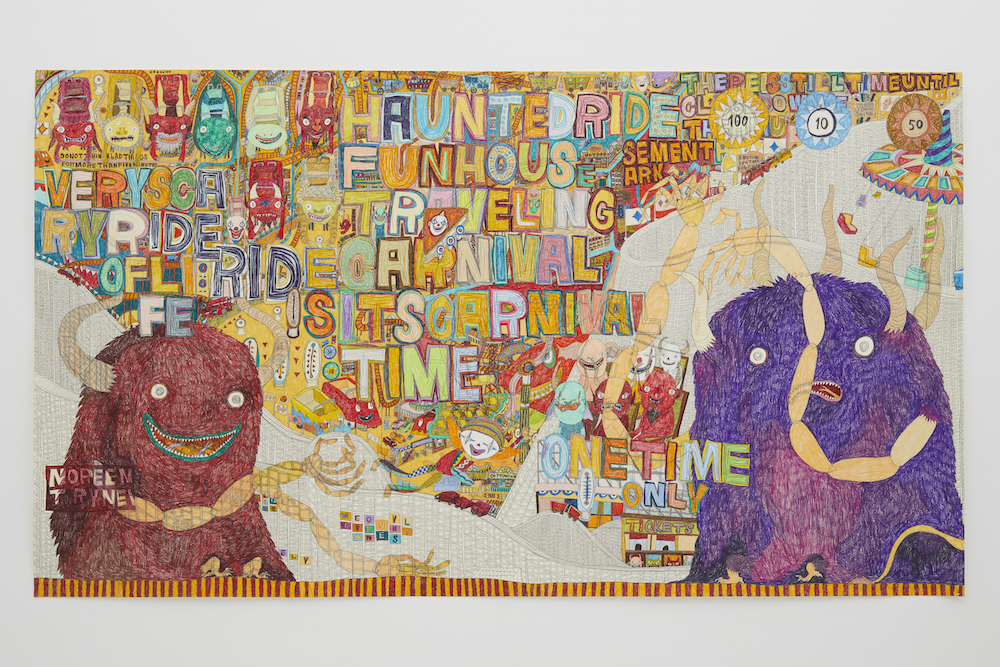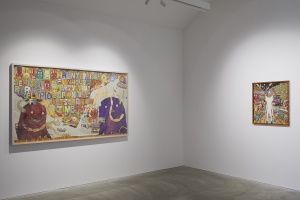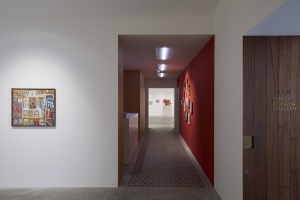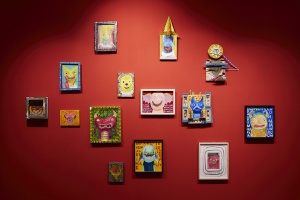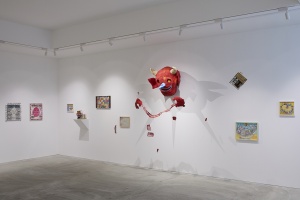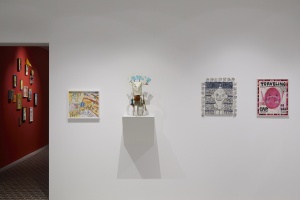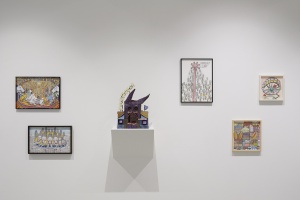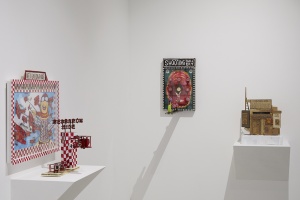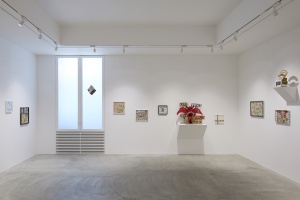Tomio Koyama Gallery is pleased to present “I Found Myself in the Traveling Carnival,” an exhibition of new works by Shintaro Miyake. The exhibition marks the artist’s 7th solo presentation with the gallery.
The works presented in this exhibition are based on the motif of a traveling carnival, and in addition to painting, drawing, and sculpture, as well as a combination of these techniques, features new forms of expression that include engraving patterns onto drawing frames, depicting images and text on frontal acrylic boards, and arranging cardboard and clay structures around the canvas frames of paintings. What is introduced is the liberated and intensely fascinating world of Miyake’s artistic practice in which genres of two-dimensional and three-dimensional pleasantly intermingle and coexist.
【About Shintaro Miyake】
Shintaro Miyake was born in 1970 in Tokyo. He completed his B.A. at Tama Art University in 1996, and currently lives and works in Tokyo.
From drawing, painting, sculpture, to “cut-outs” of characters drawn on cardboard or wood, live drawings created while wearing originally-designed costumes, as well as performance, and video, Miyake freely incorporates and combines a wide variety of expressions to create a unique artistic world that is permeated by a rich sense of wit. Figures with surprisingly elongated limbs, animals, imaginary creatures and worlds, various food, buildings and so forth are elaborately depicted through smooth lines, rich colors, and written text. The diverse and pleasantly humorous nature of his oeuvre has continued to fascinate and attract the attention of viewers internationally.
Miyake has held solo exhibitions in numerous locations throughout the world including Italy, Austria, Berlin, and Taiwan (For further details regarding his exhibitions, please refer to the following:http://tomiokoyamagallery.com/en/artists/shintaro-miyake/)
His works are housed in the public collections of Astrup Fearnley Museum of Modern Art (Norway), Kistefos Museet (Norway), Haus der Künstler in Gugging (Austria), The JAPIGOZZI Collection, Rubell Family Collection (USA), and the Takahashi Collection.
*********************************************************************************************************
*On this occasion, Miyake commissioned Hanagata rantan to produce the theme song for this exhibition titled, “HAVE FUN.”
(Lyrics / Composition / Song: Hanagata rantan)
The song can be listened to at the following link:
Audio Player
*********************************************************************************************************
【About the Exhibition ““I Found Myself in the Traveling Carnival”】
In this exhibition titled “I Found Myself in the Traveling Carnival,” Miyake creates works that serve to contemplate fundamental themes of “human life and death” and “the awareness of ego” through the context of a “carnival.”
Miyake, has long been interested in why people live and die, and mentions being aware of his own existence now in his days of adulthood. When did his perceptions of this begin? He recalls having developed his self-awareness and ego without particularly realizing, almost as if “he found himself to be alive before he knew it.”
What is the connection between this sense of “being alive” and a “carnival?” For Miyake, a “carnival” is that which resides within a fragment of his memories as a child. He describes how a carnival is like a microcosm of life that reflects joy, sadness, and the passage of time. While providing an exciting experience, a carnival brings to mind the scary yet fun sensation of going on different rides, and at the same time is a nostalgic memory of the past that one can never return to.
The work “FUN RIDE” depicting a roller coaster track that goes around in various different directions in the manner of an intertwining maze seems to represent the twists and turns of life. The three-dimensional track and small carts jump out beyond the frame, illustrating an air of lightheartedness that is not bound to existing frameworks, as well as the fun and merriment permeating his means of expression. Characters within the rides and haunted house are personified and can be seen enjoying the different attractions themselves, parachute rides are depicted in an overwhelming number, and strangely illustrated flying saucer-shaped vehicles continue to spin and rotate as if reflecting the very vicissitudes of life –What is presented before our eyes are various scenes of a carnival where reality and fiction coalesce, the nature of which instills much humor in viewers.
【An Internal Urge, Freedom, and the Genuine Pursuit of Merriment: The Artistry of Shintaro Miyake】
Kenjiro Hosaka, Senior Researcher of The National Museum of Modern Art, Tokyo mentions the influence of Art Brut, Outsider Art, Folk Art, and Australian artist Gugging’s work on Miyake’s practice.
“(Regarding Miyake’s most important early series Miss Sweet) we can also point to similarities with the work of the Gugging artists and other outsider art, in terms of the use of colored pencils, a non-professional art material, and the unconcern with lines running over one another, as if driven by an internal urge.”
(Kenjiro Hosaka, “Shintaro Miyake: New Approaches,” ‘THE ARTWORKS OF SHINTARO MIYAKE: I AM HERE’, Bijutsu Shuppan-sha, 2018)
In addition to his condensed expressions that consist of repeated lines that run over one another, the internal urge as an artist to “depict” is a highly significant point for Miyake, who himself mentions as follows regarding this exhibition.
“I don’t place importance on superficial factors, like elaborate or strikingly eccentric forms of depiction. It’s an issue of what I want to create. I want to move my hands, and create things in the way that I please.”
To depict what he wishes on what he pleases, as he likes, and in any size that takes his fancy. To purely explore his feelings, and expressing them in ways that are not bound to conventional means. Shintaro Miyake is an artist who sincerely engages in pursuing ultimate themes such as what he loves, his own self, what it means to live, art, and life as a whole, continuing to develop his artistic expression while repeatedly finding himself confronting the conflicts that arise.
“(For Miyake, the action of the viewers) did not have to be something lofty that leads to the improvement of society, as one might expect with contemporary art, but more primal human behavior such as wanting something, laughing at something, amusing and so forth.”
“(Miyake’s work since the 2010s) is grounded in a sense of crisis about current realities and aims to convey messages. The realities that incited Miyake to create these works provoke complex feelings, but the artist always puts a positive face on things without obviously venting feelings of anger or grief. The work conveys a sense of the possibilities of art today.”
(Kenjiro Hosaka, “Shintaro Miyake: New Approaches,” ‘THE ARTWORKS OF SHINTARO MIYAKE: I AM HERE’, Bijutsu Shuppan-sha, 2018)
Life goes on, whether it brings happiness or hardship. Through Miyake’s work, we may find joy in recognizing the simple things in our everyday lives that are often forgotten or go unnoticed. We invite viewers to embrace the creative world of Miyake’s latest oeuvre.
—————————————————————————————–
For press inquiries, please contact:
press@tomiokoyamagallery.com (Makiko Okado)
—————————————————————————————–
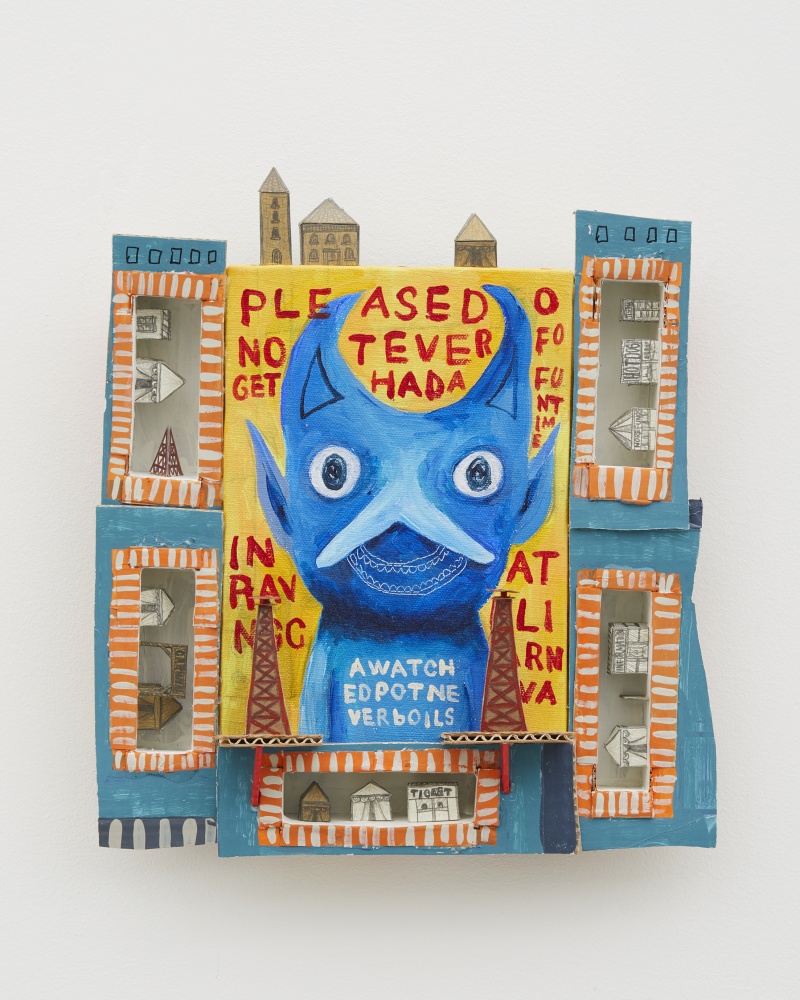
Don’t Forget
2019
31.5 x 28.5 cm
©Shintaro Miyake
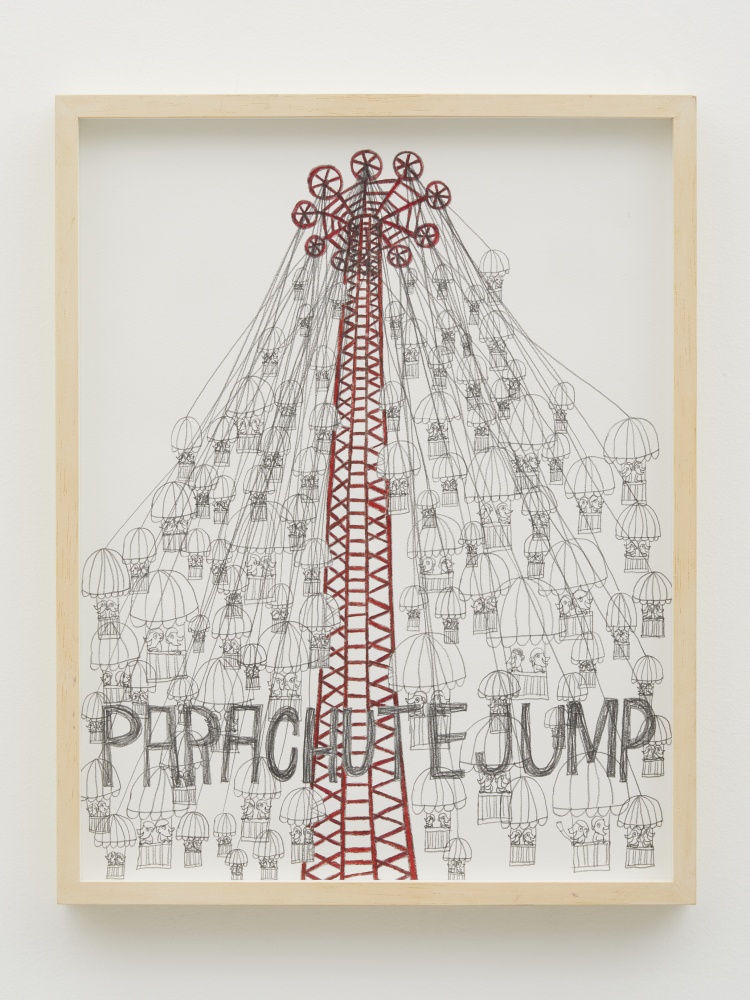
PARACHUTE JUMP
2019
42.6 x 33.7 cm
©Shintaro Miyake
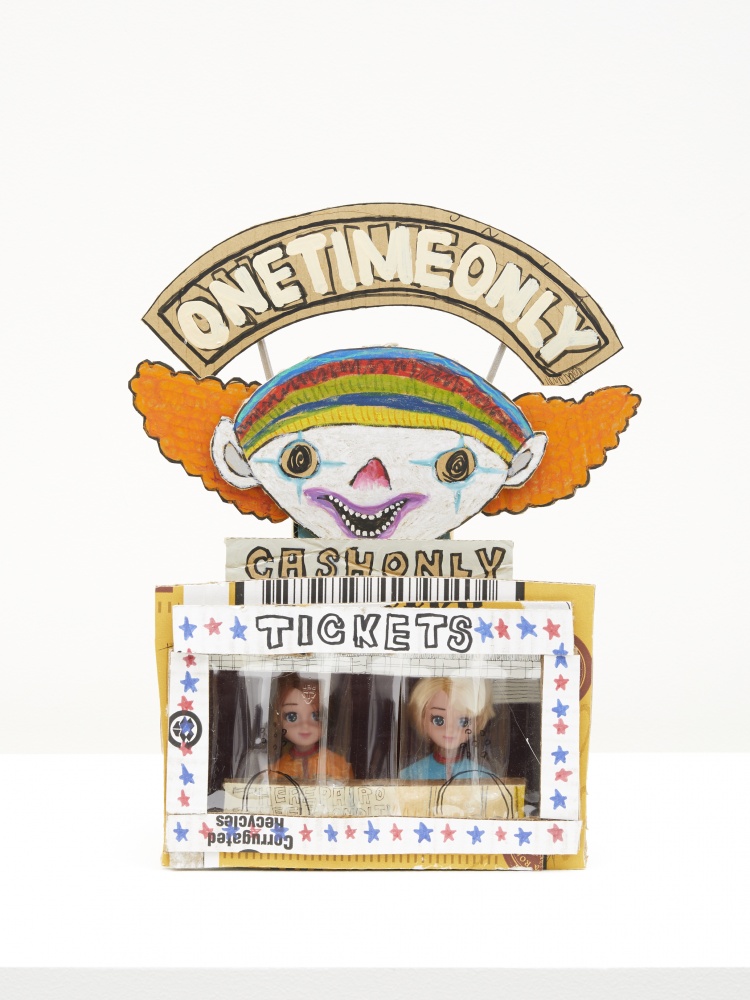
TICKET OFFICE
2019
35.5 x 29.0 x 16.0 cm
©Shintaro Miyake

